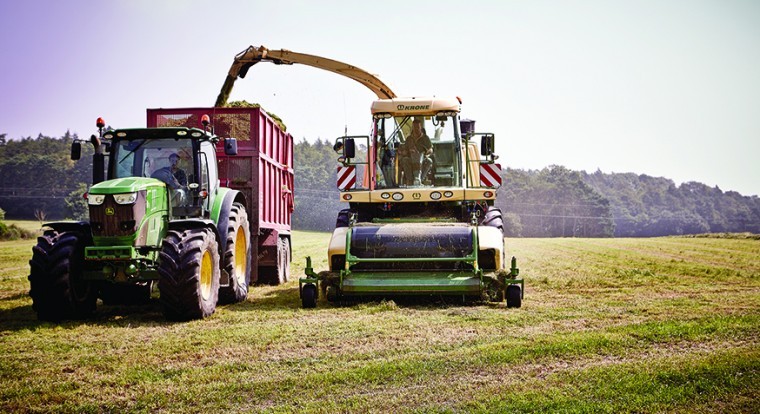“With little sign of milk price recovery anytime soon, and the UK beef market unstable, maintaining a handle on costs and making the most of home-grown forage will be a key primary building block to ration formulation,” says Dr Michael Marsden, head of technical at Trident Feeds.
“We’ve seen favourable growing conditions which have enabled producers to cut grass crops earlier than last year. And it’s looking as though many farmers will have good quantities of quality silage in the clamp which will be a relief to many.”
However, Dr Marsden warns farmers against complacency. “Early silage analysis results suggest that even silage recognised as ‘good quality’ will need balancing with additional nutrients to fully maximise its benefits.”
Explaining why, he highlights that data from Trouw Nutrition on first cut silage analysis, which has so far typically shown higher crude protein (CP) levels than in 2014.
“CP levels of 14.2% have been seen in 2015 against an average of 13.7% in 2014. Where this is the case, meeting livestock’s metabolisable protein requirements without oversupplying rumen protein will be the challenge,” says Dr Marsden.
“However, including a rumen protected protein such as SoyPass in the diet to provide the cows’ requirement for digestible undegraded protein (DUP) will help balance the ration.
“For those producers with silage that has analysed with lower levels of CP, wheat distillers will help to meet the requirements for effective rumen degradable protein (ERDP) to ensure the rumen microbes have an adequate supply of protein.”
Dr Marsden also highlights that results are indicating that first cut silages are higher in energy (10.9MJ ME/kg DM on average) and fermentable carbohydrates this year, but lower in digestible fibre when compared to last year.
“At this point, the inclusion of an additional digestible fibre source, such as sugar beet feed or wheat distillers, will help maintain a balanced rumen environment. This will help to uphold milk butterfat content and also reduce the risk of acidosis.
“These additions to a forage based diet could have a significant impact on improving outputs and cow health, ensuring that the bottom line isn’t comprised this winter period,” concludes Dr Marsden.




